George Albert Smith, one of this writer’s favourite early film-makers, is perhaps among the unluckiest men in all of cinematic history in terms of reputation.
While many historians and film fans will often throw up names as diverse as Louis Le Prince, Thomas Edison, Alice Guy-Blaché and Georges Méliès as among the most important figures in the development of the moving image, Smith will often find himself overlooked.
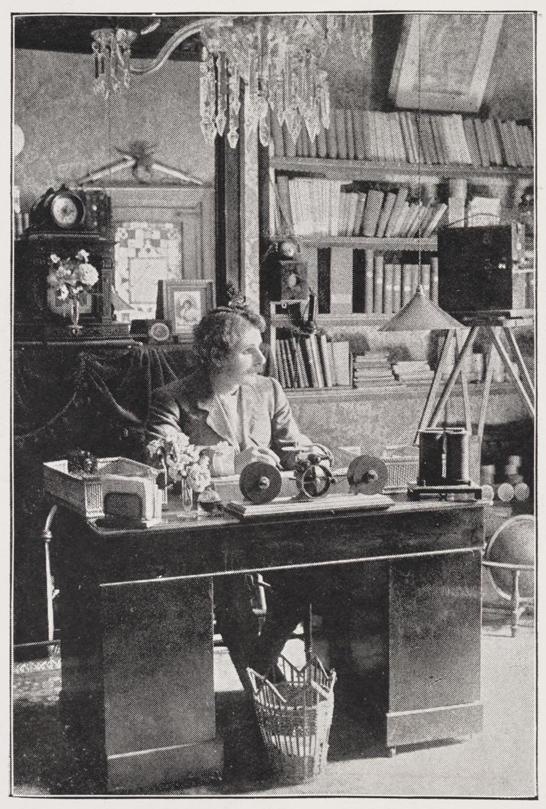
Indeed, even his invention of Kinemacolor as the first piece of technology able to successfully shoot in colour was superseded with our discovery of Edward Turner’s incredible early movies.
So, who exactly was George Albert Smith and why is he such an important figure in the history of film and cinematography?
Armed with curiosity, access to our archives and the expert knowledge of curator Toni Booth, I decided to investigate.
Who was George Albert Smith?
George Albert Smith, it transpires, was a man of many interests—before discovering cinema, he enjoyed the dual careers of stage hypnotism and astronomy. It is perhaps because of this that when Smith decided to pursue film-making, his work featured an array of trick photography, illusions and, above all else, a sense of wonder.
From 1897 through until 1908, Smith fashioned one of the most inventive and innovative of all the filmographies of early cinema and, in doing so, helped create some of the earliest examples of movie grammar.
http://www.youtube.com/watch?v=bmSJ5SAXHws
Credited with being perhaps the first film-maker to utilise parallel action (in 1898’s Santa Claus), Smith used a wide array of technical marvels including close-up and double exposure, as well as the medium’s first use of narrative editing with his witty and tender The Kiss in the Tunnel (1899).
On top of his directorial imagination, Smith was also something of a skilled technician. This led to American entrepreneur Charles Urban approaching him to continue the work of Edward Turner in developing technology which could film moving images in colour.
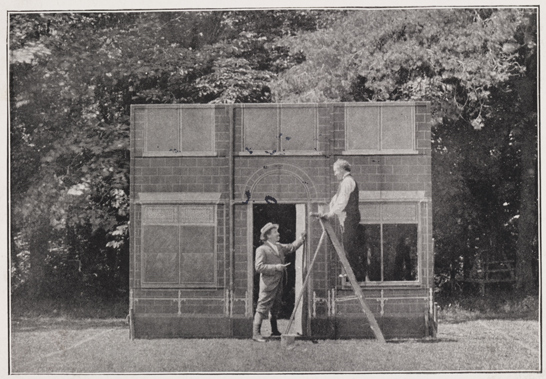
Using alternating red and green filters, Smith was able to create, in what would be his last movie as a director, the first successful motion picture filmed and projected entirely in natural colour: A Visit to the Seaside. The 8-minute feature, using the technology he developed, also launched Kinemacolor—an invention which was an enormous success for the following few years.
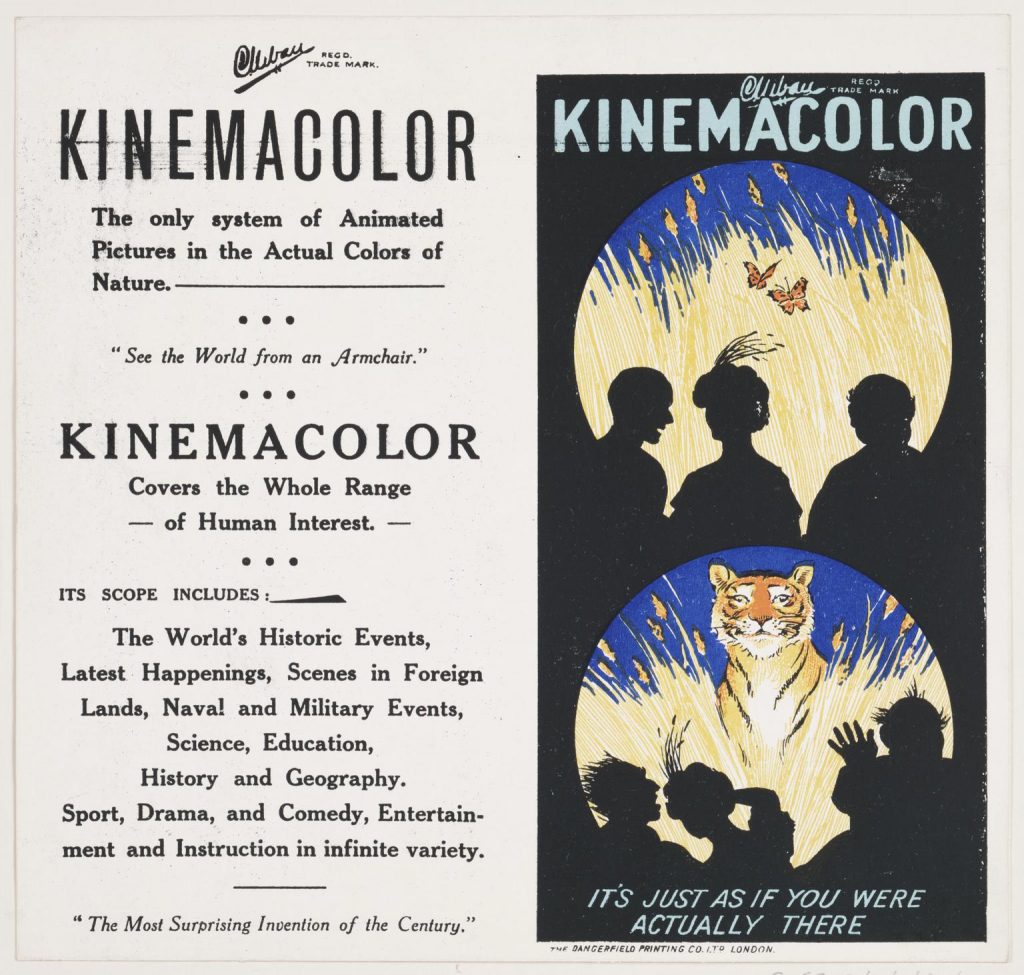
Kinemacolor in our collection
Taking advantage of Insight, our Collections and Research centre, I was able to see with my own eyes the cameras which George Albert Smith had used over 100 years ago to create his short movies.
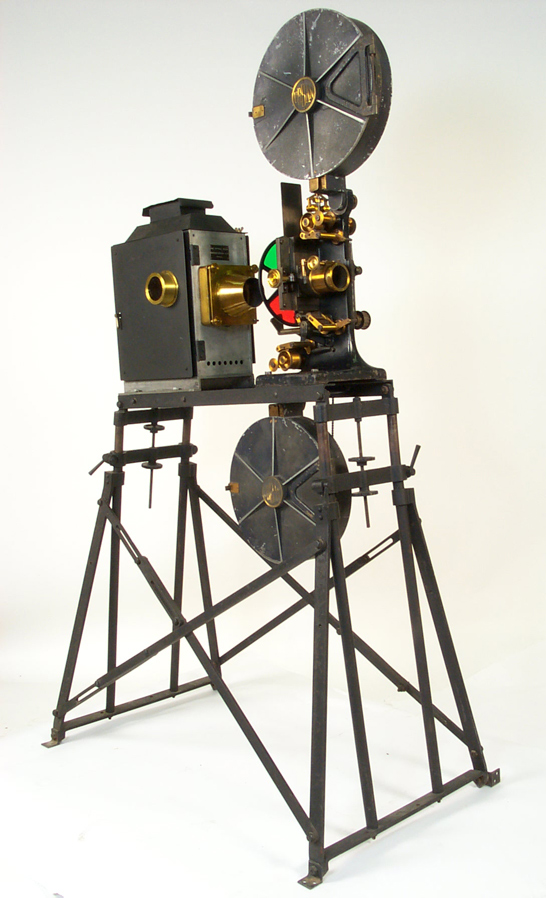
While it’s possible to have an abstract notion of inventions and ideas of film-makers, seeing such technical ingenuity in the flesh is a profound and humbling experience which can really help with processing and understanding for the observer.
Toni Booth also showed me a selection of negatives and positives from our extensive collection of artefacts and technology relating to Kinemacolor.
Perhaps the most interesting of these were the cells taken from the fascinating Delhi Durbar (also known as With Our King and Queen Through India), a smash hit documentary from 1912.
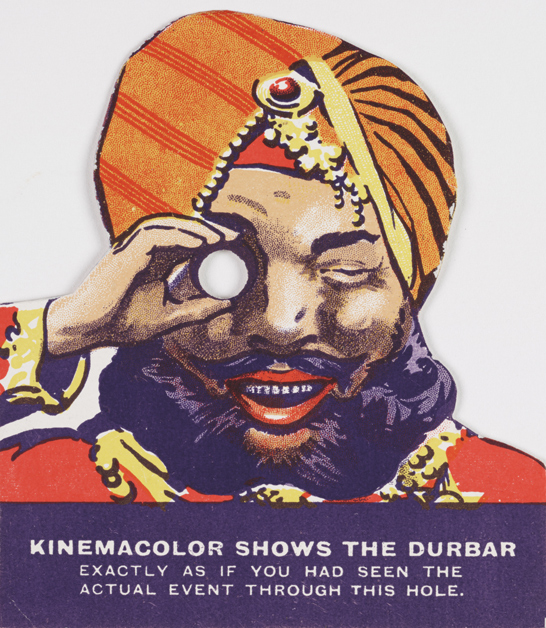
Looking at the strip of film, it is possible to see that each individual frame was marked with an alternating filter colour (red or green) so as to let the projectionist know how to load the film-reel correctly so as to coordinate it with the Kinemacolor projector.
As Smith’s Kinemacolor process dominated early colour cinema, the pioneer himself stepped back from active film-making and found himself embroiled in legal battles regarding his inventions and systems. Partly because of this, much of the work and technical innovations he had created became overshadowed or forgotten.
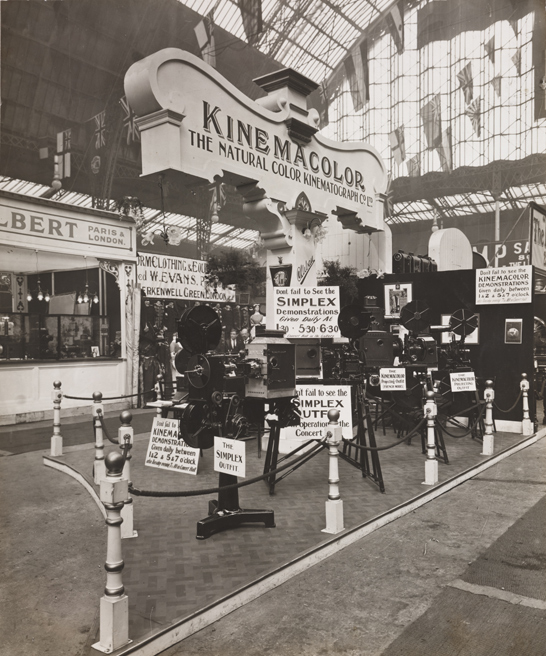
It was not until some while later, apparently over 30 years, that British film historians rediscovered the incredible levels of sophistication Smith showed in his early work and realised how truly, historically important the film-maker was to the medium.
Thankfully, due to the preservation and restoration work here, alongside the expert knowledge of our curators, it is unlikely that any historical oversight like this will ever take place again. In fact, the opposite is true—as time goes by, it is possible to see how truly remarkable and groundbreaking so much of the work created by George Albert Smith and his contemporaries was. Seeing them in person makes this even more obvious.
A nice post, but the photo from c.1899 does not show Charles Urban (i.e. the man on the ladder)
Hi Luke – thanks so much for bringing this to our attention. I’ve passed your comment on to our curators who’ll update our records.
“THE MAKING OF THE PANAMA CANAL (The Building of the Panama Canal)
ACTUAL SCENES OF THE BALKAN WAR
JAPANESE WAR MANEUVERS (Japan’s Army in Maneuvres)
THE UNITED STATES NAVY
U. S. BATTLESHIP AT PRACTICE.
Travel Talk
Farmyard Friends
The Chef’s Preparations
Picturesque North Wales
The Rebel’s Daughter
Insects and Their Habits
Animal Studies
The Birth of Flowers
Reflections of Color
The Soap Bubble and Rainbow
Egyptian Sunset
Lord Kitchener’s Review of the Egyptian Troops at Khartoum
Regatta Week at Cowes, England
Wild Birds of Alia
Wild Birds of Asia (last entry was a typo.) Thank you.
The Chateau of Chambord is in Kinemacolor.
The Visit to the Seaside is the very first successful Kinemacolor movie. The color stock imitating many others.
List of more Kinemacolor films:
The Chateau of Chambord (1913)
Tobacco Culture in Cuba (1913)
Crabs and Lobsters (1913)
La Parisienne Elegante in Her Boudoir (1913)
There is the film in Prizma Color was based on the event of Jesus Christ:
The Garden of Gethesamane (1920)
Here is the listing of the following movies from some of the missing websites:
Lord Kitchener Reviewing Egyptian Troops
Cairo, Egypt
In the Land of Mohammed
Eton Day on the Thames Windsor
Investiture of H.R.H. the Prince of Wales at Carnarvon
A Tragedy of Olden Times
A Pilgrimage to Pompeii
The Coronation Procession
The Yarmouth Herring Industry
Visit to Memphis, the Pyramids and Sphinx
Bathing at Ostend, Belgium
Hello,
Would you know who might hold a copy of the film Cairo, Egypt or Visit to Memphis?
Thank you so much!